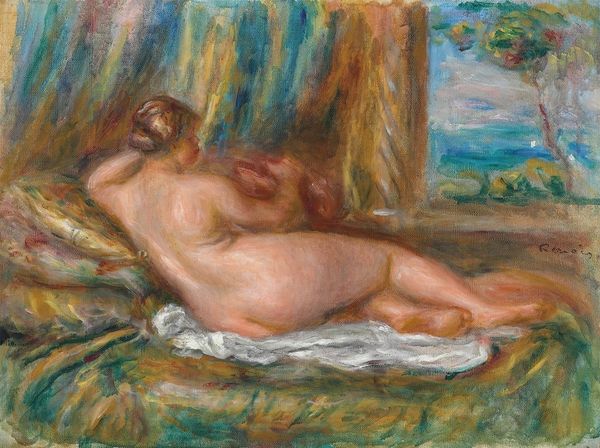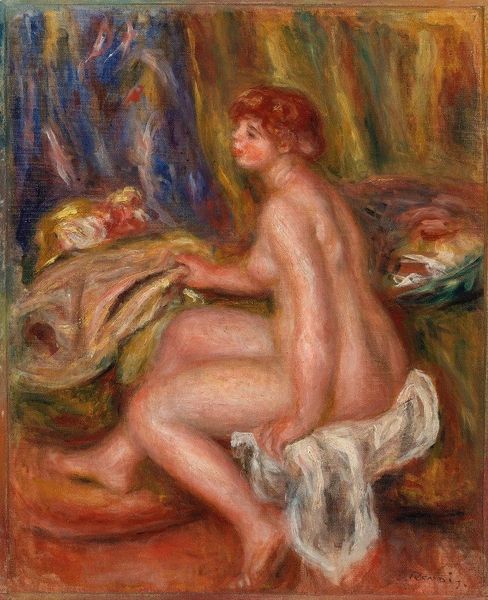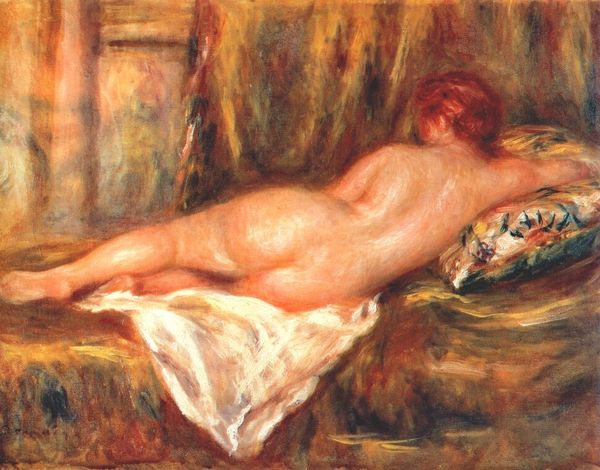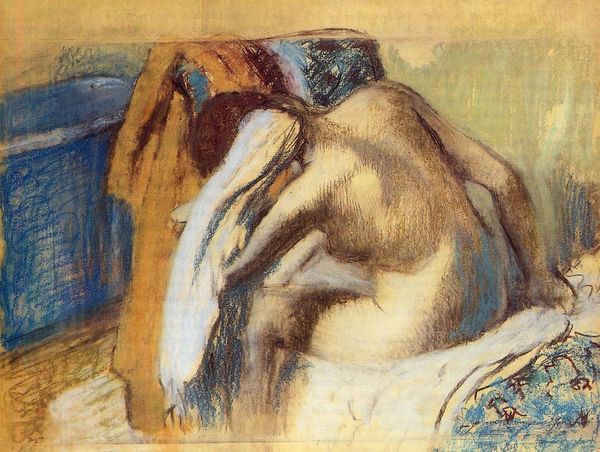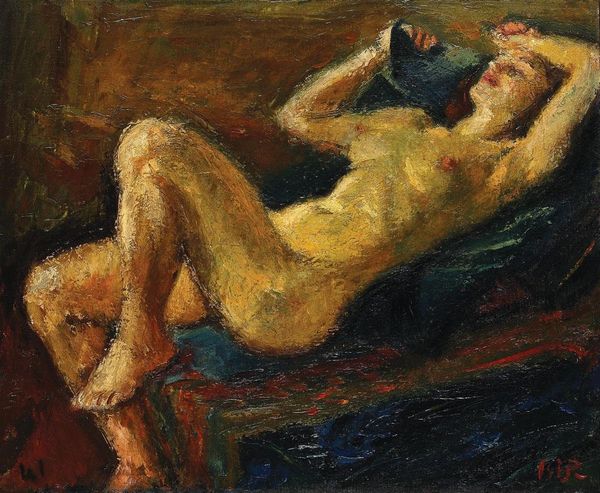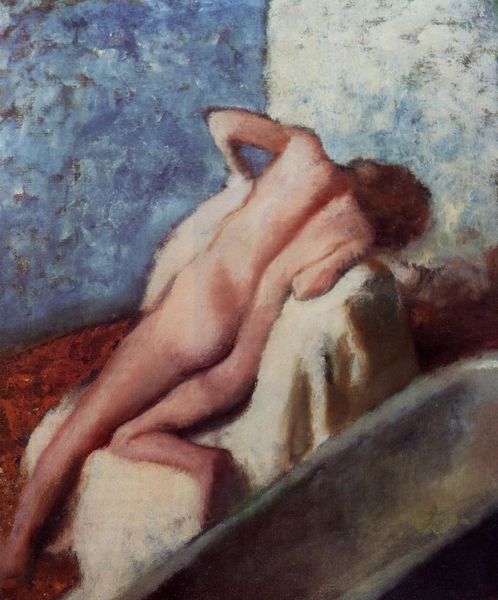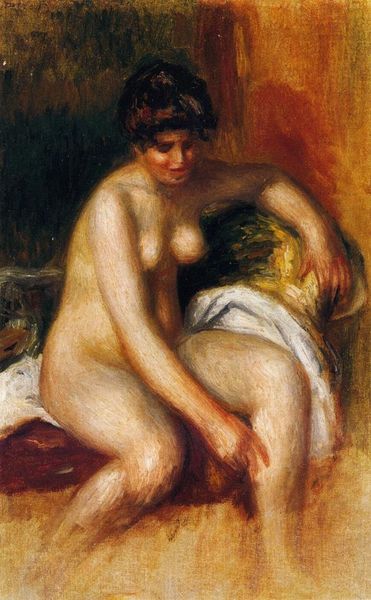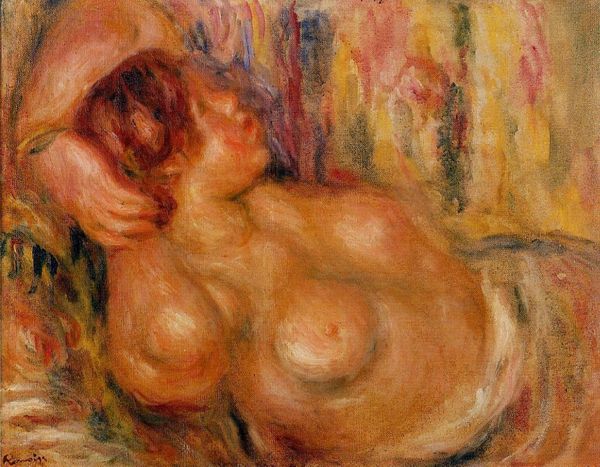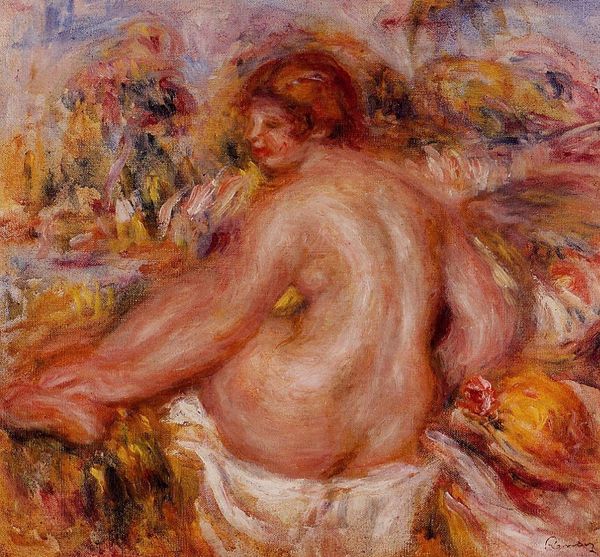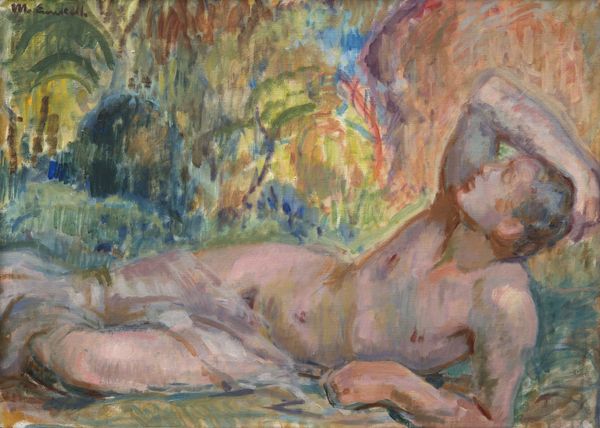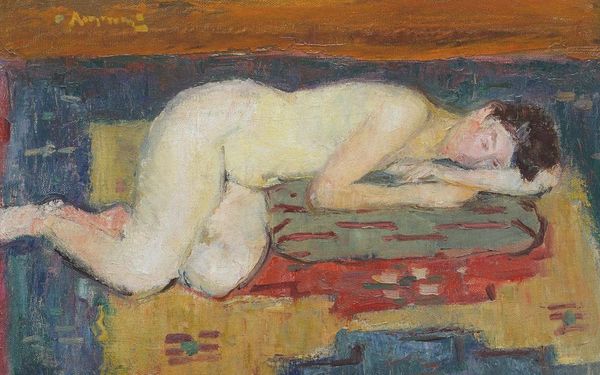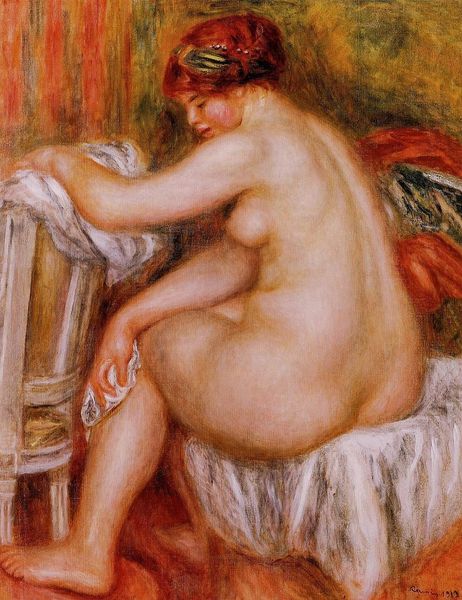
Copyright: Public Domain: Artvee
Editor: Here we have Renoir’s "Le Repos," made around 1895. It's an oil and pastel piece, showing a nude woman reclining. There's a softness to the lines, an almost dreamlike quality, and it feels incredibly intimate. How would you interpret this work, particularly within its historical context? Curator: That intimacy is key. Renoir was deeply embedded in the Parisian art world, where depicting the nude was a long-standing tradition, often linked to notions of beauty and classical ideals. However, Renoir and the Impressionists challenged the traditional, idealized form by focusing on the everyday. Consider the gaze—the subject isn’t posing in the heroic style we saw in academic painting. What does that suggest to you about the evolving role of women and their representation in art? Editor: I suppose it feels more real, less about the male gaze. But how would a regular viewer in 1895 have received this? Curator: This "realness" might have been unsettling for some viewers accustomed to seeing nudes depicted with a detached and moralizing approach. The accessibility of art to the broader public increased significantly through new galleries and exhibitions during this period, democratizing art viewing, but also bringing rise to intense critical discussions. The looser brushwork and focus on light—hallmarks of Impressionism—further moved away from the meticulous realism expected at the time, influencing popular taste. It's as much a commentary on beauty standards as it is a representation of women. Editor: That's fascinating! It's made me think about how artistic tastes evolve and impact cultural values. Curator: Exactly! It demonstrates the important, public role art and its display has played over time, shifting views through intimate glimpses like these.
Comments
No comments
Be the first to comment and join the conversation on the ultimate creative platform.
